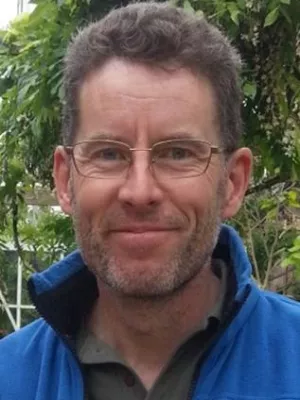
Dan Hammarlund
Professor

Two hundred years of land-use change in the South Swedish Uplands: comparison of historical map-based estimates with a pollen-based reconstruction using the landscape reconstruction algorithm
Author
Summary, in English
Long-term records of environmental history at decadal to millennial time-scales enable an assessment of ecosystem variability and responses to past anthropogenic disturbances and are fundamental for the development of environmental management strategies. This study examines the local variability of land-use history in the South Swedish Uplands over the last 200 years based on pollen records from three lake-sediment successions. Temporal changes in the proportional cover of 14 plant taxa were quantified as percentages using the landscape reconstruction algorithm (LRA). The LRA-based estimates of the extent of four land-use categories (cropland, meadows/grassland, wetland, outland/woodland) were compared to corresponding estimates based on historical maps and aerial photographs from ad 1769-1823, 1837-1895, 1946 and 2005. Although the LRA approach tends to overestimate grassland cover by 10-30 % for the two earliest time periods, the reconstructed vegetation composition is generally in good agreement with estimates based on the historical records. Subsequently, the LRA approach was used to reconstruct the 200-year history of local land-use dynamics at 20-year intervals around two small lakes. The qualitative assessment of difference approach, which requires fewer assumptions and parameters than LRA for objective evaluation of between-site differences in plant abundances, provides consistent results in general. Significant differences exist in the land-use history between the sites. Local catchment characteristics, such as soil conditions and wetland cover, appear important for the development of human impact on the landscape. Quantifications of past vegetation dynamics provide information on the amplitude, frequency and duration of the land-use changes and their effects on terrestrial and aquatic ecosystems, and should be taken into account when nature conservation strategies are developed.
Department/s
- Quaternary Sciences
- MERGE: ModElling the Regional and Global Earth system
- BECC: Biodiversity and Ecosystem services in a Changing Climate
Publishing year
2015
Language
English
Pages
555-570
Publication/Series
Vegetation History and Archaeobotany
Volume
24
Issue
5
Document type
Journal article
Publisher
Springer
Topic
- Geology
Keywords
- Lake sediments
- Pollen analysis
- Landscape reconstruction algorithm
- Land-use cover
- Istorical maps
Status
Published
ISBN/ISSN/Other
- ISSN: 0939-6314

